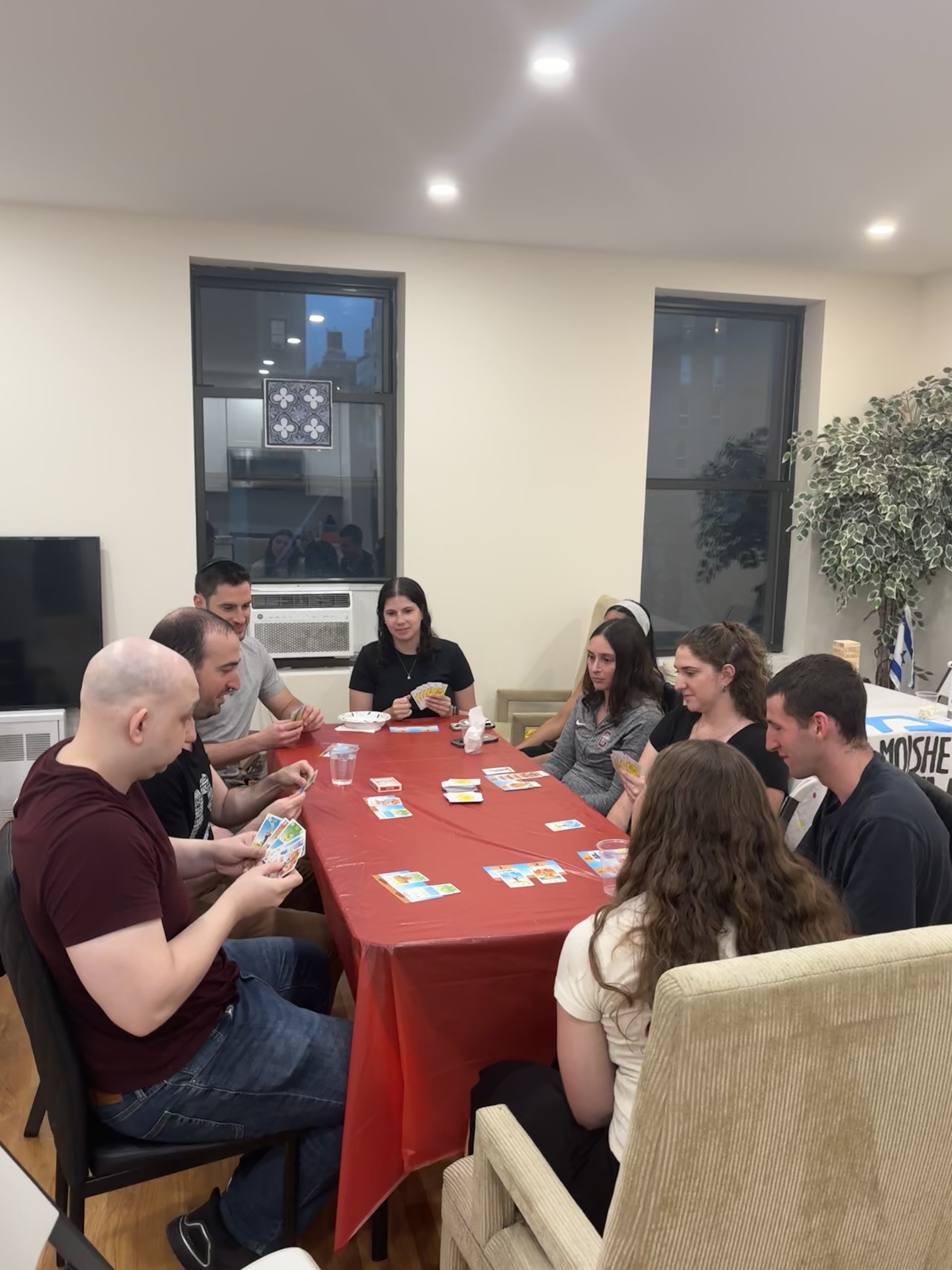
From Dream to Doorstep: Two Best Friends’ Moishe House Story
It was a Monday night, our second week of living in New York City and time for our second event as Moishe House Residents — alongside Spencer, a returning Resident who was working hard to make the new apartment feel like home.
Just before our second event, Board Game night, a storm hit, bringing torrential rain, flash flooding, and stuck subways. As we saw the storm outside getting worse, we sat around the table convinced no one would show up — until we heard a buzz. One by one, people called up, and the three of us ran to buzz them in. A few moments later, we heard squishing shoes in the hallway. People arrived completely soaked from head to toe, yet somehow, they were smiling. Maybe it was the comfort of seeing the mezuzah on our door, maybe it was the Moishe House doormat at their feet, or maybe it was the three of us standing there with towels for them to dry off. Whatever it was, they clearly felt that it was worth weathering the storm to find a place that felt just right.
Without skipping a beat, our roommate Spencer handed out dry shirts from his closet, threw wet socks in the dryer, and truly showed how Moishe House isn’t just a name —it’s a commitment. It means making sure that people truly feel at home the moment they step through our doors.
It was that commitment that made us want to be a part of Moishe House. We had met a few years ago at University of Delaware Chabad and became best friends over challah bakes, Shabbat dinner set ups, and Jewish holiday celebrations. With the help of our friends, we created a free challah hotline out of Isabella’s apartment. We made the dough between classes and meetings and braided the challah using different toppings each week, making sure to make at least five pounds of challah so that we could say the Hafrashat Challah blessing and pray together. As the challahs baked, we caught up on each other’s lives, then hand-delivered the challahs to friends around campus.
When we found out we both wanted to live in New York City, we were ecstatic. We dreamed of living in a Moishe House but didn’t think it could actually happen. Nervous but excited, we went into the Moishe House application process arm and arm, all or nothing — take both of us or neither of us. One day, we got a text from Spencer Perlman, a Resident at our dream Moishe House in the Upper West Side neighborhood. That text led to phone calls and Zooms, and eventually, to becoming Residents.
Now, at our Moishe House together, we couldn’t be happier to continue strengthening our love for hosting, Judaism, and making a place feel like home.
That night, once we were all around the table, wet hair, snacks in hand, and surrounded by new people, the storm faded into the background. The apartment quickly filled with laughter, strategy debates over the board game, new connections and, of course, Jewish geography. Some people had just moved to New York City, like us, and soon we were all sharing how our love for Judaism and desire to connect with Jews our age led us to New York. Others had come to Moishe House events at the other houses and were able to make the new apartment feel like home, just like the last one did.

People hung around long after the games ended, chatting in the kitchen, swapping numbers, making sure everyone is in the WhatsApp group chat and even making plans to hang out outside of Moishe House events.
Once people started collecting their things, we gave out umbrellas for the walk home and told everyone we hoped to see them at our next event. When the storm started, we thought no one would show up, but our community showed us a beautiful lesson: the best events are the ones that remind you why spaces like this matter — spaces where people feel welcome to show up as they are, soaked shoes and all. When we were dreaming of building our own Jewish community, little did we know that one of our very first events would show us the epitome of what the word “house” in Moishe House means, making sure that people truly feel at home the moment they step through our doors. We couldn’t be more excited for our upcoming events and for countless more moments like this.
